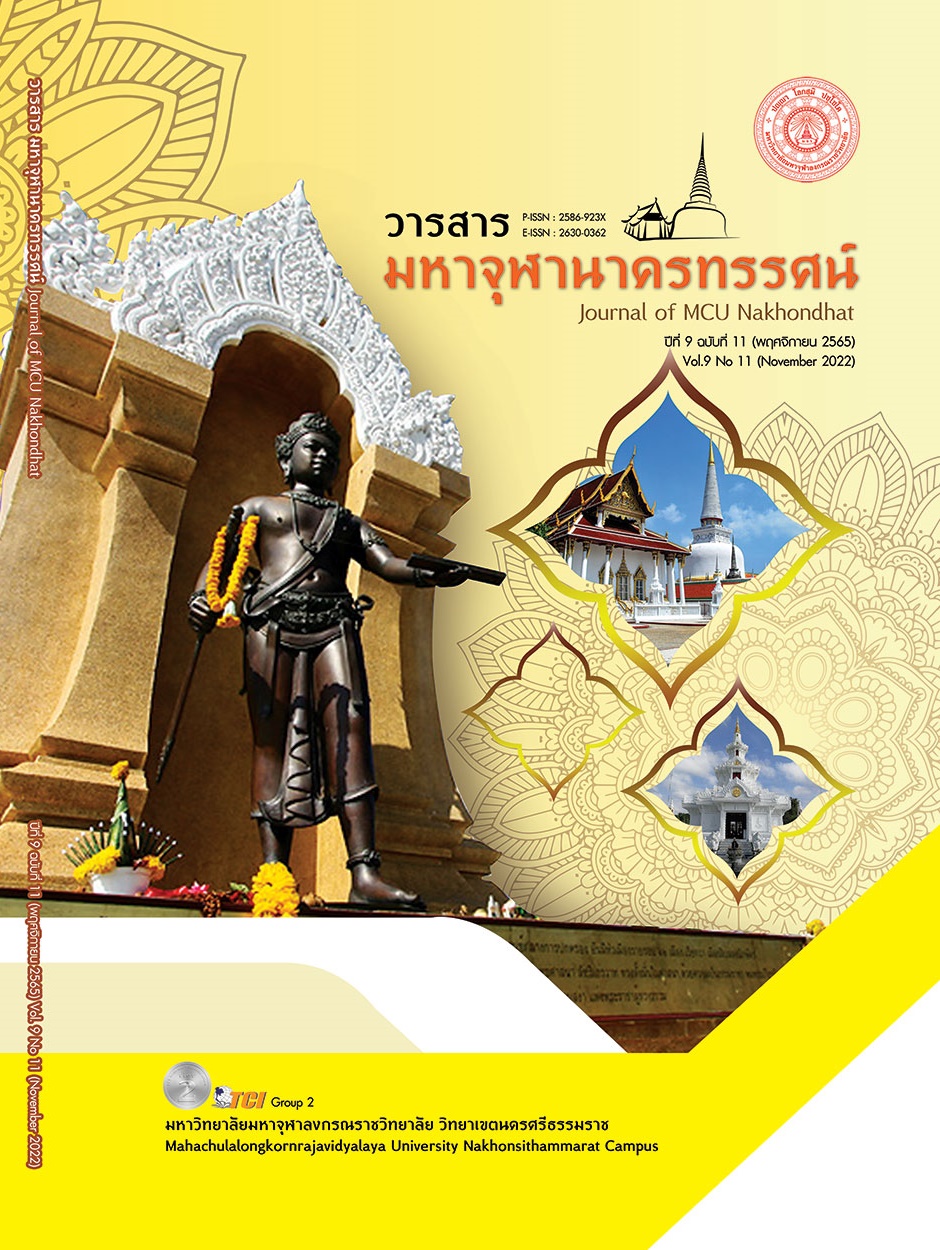DEVELOPMENT OF A MUSHROOM HOUSE WITH A COMBINATION OF TECHNOLOGY
Main Article Content
Abstract
The objectives of this paper are 1) to develop 2) to test the efficiency and 3) to assess the quality of the mushroom house by the combination of technology. The tools used include Mushroom nursery with a combination of technology Performance Test Table and Quality Assessment Form research method The researcher has developed a mushroom nursery. by applying the technological process to solve problems encountered in the mushroom cultivation process in the greenhouse by combining various technologies Then put it to test its performance. and assess the quality The basic statistics used are percentage, mean, and standard deviation. The results of the research were as follows: 1) The results of the development of a mushroom greenhouse by combining technology consisted of a house with dimensions 2 meters wide x 3 meters long x 2 meters high made of rust-proof painted steel. gable roof And there is an intelligent IOT technology system for spraying fog and ventilation for temperature control. and control the humidity inside the house to be suitable for mushroom cultivation in the house and a set of solenoid valves to control the fog sprayer Can work according to the specified temperature by controlling through the control cabinet. Automatic control and control via mobile applications The efficiency is 100%. 3) The results of the quality assessment of the mushroom house by the combination of technology. from the experts Overall, it was at the highest level, with a mean of 4.57 and a standard deviation of 0.49.
Article Details

This work is licensed under a Creative Commons Attribution-NonCommercial-NoDerivatives 4.0 International License.
References
จีระศักดิ์ วงษ์บงกชไพศาล และคณะ. (2562). โปรแกรมทดสอบอุณภูมิและความชื้นในดินสำหรับโรงเรือนอัจฉริยะเพื่อใช้ปลูกผักออร์แกนิค. ใน รายงานการวิจัย. มหาวิทยาลัยศิลปกร.
ฉัตรพงศ์ ชูแสงนิล. (2561). อินเทอร์เน็ตแห่งสรรพสิ่ง. เรียกใช้เมื่อ 3 มิถุนายน 2565 จาก https://www.scimath.org/article-technology/item/9089-2018-10-18-07-59-07
ธรัช อารีราษฎร์ และวรปภา อารีราษฎร์. (2563). ระบบไอโอทีสําหรับการตรวจสอบความชื้นและอุณหภูมิเพื่อส่งเสริมการเพาะเลี้ยงเห็ดในโรงเรือนให้มีผลผลิตที่สมบูรณ์. วารสารวิชาการการประยุกต์ใช้เทคโนโลยีสารสนเทศ, 6(1), 7-18.
บรรณ บูรณะชนบท. (2560). การเพาะเห็ดนางรม-นางฟ้า. นนทบุรี: สำนักพิมพ์ฐานเกษตรกรรม.
ยุทธนา พรรคอนันต์. (2563). การประยุกต์ใช้เทคโนโลยีไอโอทีควบคุมโรงเรือนเพาะเห็ด ฟาร์มอัจฉริยะ ด้วยเทคโนโลยีพลังงานแสงอาทิตย์. วารสารวิชาการ เทพสตรี I-TECH, 15(2), 27-39.
วัลลภ พรหมทอง. (2560). เห็ดเพาะกินได้ เพาะขายรวย. กรุงเทพมหานคร: มติชน.
วาริธี ธรรมชาติไพศาล. (2554). คู่มือการเพาะเห็ด. กรุงเทพมหานคร: ศูนย์ส่งเสริมการเรียนรู้เทคโนโลยีการเกษตร.
วีรศักดิ์ ฟองเงิน, สุรพงษ์ เพ็ชร์หาญ และรัฐสิทธิ์ ยะจ่อ. (2561). การประยุกต์ใช้เทคโนโลยีไอโอทีควบคุมฟาร์มอัจฉริยะในโรงเรือนเพาะเห็ดนางฟ้า. ใน รายงานการวิจัย. มหาวิทยาลัยราชภัฏลำปาง.
ศุภวุฒิ ผากา และคณะ. (2557). การพัฒนาระบบควบคุมอุณหภูมิและความชื้นที่เหมาะสมต่อการเจริญเติบโตของเห็ดในโรงเพาะเห็ดบ้านทุ่งบ่อแป้น ตำบลปงยางคก อำเภอห้างฉัตรจังหวัดลำปาง. วารสารวิชาการคณะเทคโนโลยีอุตสาหกรรม, 7(1), 58-69.
ศูนย์เทคโนโลยีและนวัตกรรมดิจิทัลภาครัฐ. (2565). Smart Farm การทำเกษตรสมัยใหม่. เรียกใช้เมื่อ 3 มิถุนายน 2565 จาก https://dgti.dga.or.th/modern-farming/
สถาบันส่งเสริมการสอนวิทยาศาสตร์และเทคโนโลยี. (2554). กระบวนการเทคโนโลยี. กรุงเทพมหานคร: สถาบันส่งเสริมการสอนวิทยาศาสตร์และเทคโนโลยี.
สุวลี ชูวาณิชย และเกริกชัย ทองหนู. (2562). การประยุกต์ใช้ไอโอทีสำหรับระบบควบคุมอุณหภูมิและความชื้นในโรงเรือนเพาะเห็ดแครง. ใน รายงานการวิจัย. มหาวิทยาลัยราชภัฏสงขลา.


